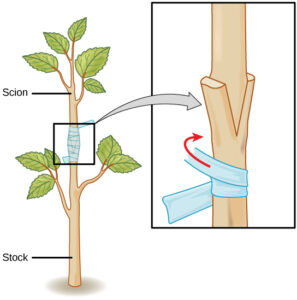Back to: Pre Vocational Studies JSS 2
Welcome to class!
In today’s class, we’re going to look into the interesting world of propagations. It might sound a bit fancy, but it’s actually a simple concept that happens all around us.
Meaning of Propagations
What is Propagation?

Think about your favourite plant. How did it grow so big from just a tiny seed? That’s where propagation comes in! Propagation is the process of producing new plants from an existing plant. It’s like making copies of a plant!
There are two main ways plants can propagate: Sexual Propagation and Asexual propagation
- Sexual Propagation: This is like a plant having a baby! It involves the joining of two special cells called gametes. These gametes can be found in flowers. When they join together, they form a seed. This seed can then grow into a new plant.

2. Asexual Propagation: This is like cloning a plant! It doesn’t involve seeds. Instead, parts of the plant, like stems, leaves, or roots, can be used to grow new plants.

Examples of Propagation:
- Cuttings: When you take a piece of a stem from a plant and plant it in the ground, it can grow into a new plant. This is called cutting. E.g Cassava stem.
- Runners: Some plants, like strawberries, grow runners that have little plantlets on them. These plantlets can be detached and planted to grow into new plants.
- Bulbs: Bulbs are underground storage organs that can produce new plants. Onions and tulips are examples of plants that grow from bulbs.
Why is Propagation Important?
Propagation is important for many reasons:
- Preserving Plants: It helps to keep rare or endangered plants alive.
- Growing Food: Farmers use propagation to grow crops for food.
- Creating Beautiful Gardens: People propagate plants to create beautiful gardens and landscapes.
We have come to the end of today’s class. I hope you enjoyed the class!
In the next class, we shall be talking about the advantages and disadvantages of propagation by seeds and vegetable organs. Well done!
In case you require further assistance or have any questions, feel free to ask in the comment section below, and trust us to respond as soon as possible. See you in the next class!
